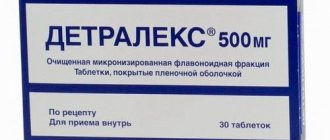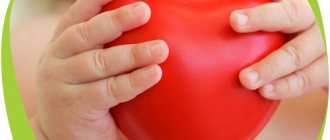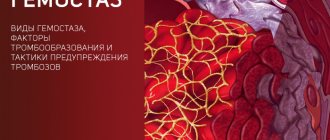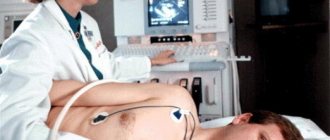Taking blood from a finger to analyze its composition is one of the most widely used diagnostic procedures that allows identifying various diseases at an early stage of development. To perform this, special devices, scarifiers, were previously used. One of their inherent disadvantages is the occurrence of painful sensations when the skin is pierced by the needle of the device. Today they have been replaced by more modern and convenient accessories - lancets. With their help, blood sampling is absolutely painless; the main thing is to know how to use it correctly.
What is a lancet?
When piercing the skin with a scarifier, the laboratory assistant applies a certain physical force. At the same time, it is not always possible to correctly calculate the depth of needle penetration. Therefore, the procedure was often accompanied by pain. And if an adult simply felt discomfort, then taking blood for analysis caused panic in some children, sometimes even leading to hysteria.
Today, adult and children's scarifiers have almost completely replaced new, easy-to-use devices - lancets. The name of this accessory is taken from the German language. Here "lanzette" is a diminutive of "lance", which translates as "spear". The devices are automated and are activated when a special button is pressed or upon contact with the skin. A very thin needle penetrates painlessly under the skin. Sterility is ensured by a removable plastic cap. Lancets are disposable devices. Manufacturers specially make them in such a way that unscrupulous workers, trying to save even on such little things, cannot reuse them.
Equipment for the procedure
To collect blood, disposable devices are used to pierce the ring finger. Such a device is called a scarifier. For children, lancets are used - an automatic, painless device with a plastic body. Due to the small needle, the analysis period will be no more than 10 seconds.
In addition, the following is used for analysis:
script async src="//pagead2.googlesyndication.com/pagead/js/adsbygoogle.js">
- Cotton wool.
- Iodine.
- Alcohol.
- Pipette.
- Gloves.
- Glass test tube.
Main advantages
When using a scarifier to draw blood after a puncture, the healthcare worker squeezes the patient's finger to obtain the amount of biofluid necessary for analysis. In this case, blood appears on the surface of the skin and interacts with air, which can affect its composition and reduce the reliability of the data obtained. The use of a lancet allows you to avoid this, because the biomaterial immediately goes into a special reservoir. In addition, the emotional state of the patient, which also affects the composition of the blood, can distort the results, albeit slightly.
And this is not the only advantage of the modern device. Lancets have a number of other advantages:
- the needles used have minimal dimensions: 0.25-0.8 mm in diameter and 1.8 mm in length, so no hematomas remain at the puncture site, and a small wound heals in 1.5-2 hours, which is especially important when diagnosing diseases in newborns , infants;
- the absence of the human factor, such as hand trembling, excessive or insufficient physical effort, ensures rapid penetration, which reduces the time of the procedure and makes it painless;
- the sterility of lancets for blood collection is ensured by the presence of a sealed package, which is opened immediately before the start of the procedure in the presence of the patient, so the possibility of infection is absolutely excluded;
- The device is easy to use, it can be used not only by specialists, but also by ordinary consumers, which is especially important for people with diabetes who have to constantly monitor their blood sugar levels.
Not only children, but also many adults are frightened by the very sight of a medical scarifier. The use of a modern lancet does not cause such fear. The procedure is quick, painless and not accompanied by negative emotions.
Glucometer Contour TS
Interpretation of finger blood test indicators
This device is already 10 years old; the analyzer was produced at a Japanese plant based on the developments of the medical brand Bayer. These are high-quality products at a relatively low cost.
What are the features of the Kontur TS glucometer:
- Based on the work of ultra-precise meters that process data in a few seconds;
- Conducts research without taking into account the presence of maltose and galactose in the blood - even high levels of these substances in the blood do not negatively affect the reliability of the results;
- The device detects glycemic indicators even with a hematocrit of 70%;
- Each analyzer undergoes quality control in the laboratory and is checked for accuracy, so the buyer can have no doubt about the reliability of the glucometer.
The package of this device includes the device itself, an auto-lancer, a case, a manual for use, a warranty card and 10 sterile lancets.
Lancets Contour TS are needles that are inserted into a piercing device, and they allow you to obtain the dose of blood required for the study.
Rules for blood sampling
Depending on the manufacturer, the appearance of the device and its design may vary slightly. However, all models have several parts that form the basis of the device:
- body in the form of an oblong handle made of durable, reliable, hypoallergenic plastic;
- the trigger mechanism is located inside;
- the kit includes one needle or a whole set (for reusable lancets) made of special medical steel;
- There is a start button on the body that activates the material taking mechanism.
To ensure that the lancet cannot be reused, the needle is locked. Features of the design of use are necessarily described in the instructions supplied with the device by the manufacturer.
The procedure for collecting biological material involves several mandatory steps:
- before starting work, it is recommended to wash your hands with soap; in any case, the intended puncture site is disinfected, for example, using 70% alcohol;
- the laboratory technician puts on disposable sterile medical gloves;
- the plastic protective cap is removed from the needle of the device;
- the healthcare worker cocks the needle holder and adjusts the depth of the puncture (when using the device for the first time, select level 2);
- the device is pressed tightly to the surface of the finger and the start button is pressed; in some models there is no button, they are triggered when the body comes into contact with the skin;
- take the sample using careful, gentle pressure;
- The cap is removed and the blocked needle is disposed of.
In medical institutions today, mainly disposable sterile lancets are used, since their needle comes into contact with blood and, if reused, can cause infection of the patient. The design of most models makes its further use impossible.
However, for diabetics, collecting a sample and measuring blood sugar levels is a vital procedure that must be done several times a day. Therefore, they prefer lancets that are reusable. In this case, in addition to mandatory hand washing with soap, it should be ensured that it is impossible to reuse a needle that has already been used once by another person. It should also be taken into account that over time the needle will become dull, lose its sharpness, and punctures will become painful.
Patients with diabetes should take into account that taking fluid with an already used needle can lead to an inflammatory process, so lancets for glucometers and other consumables should be stored out of the reach of children in closed packaging.
Selection and operation process
Thus, you should choose the needles that will be used for the glucometer based on their automaticity and the degree of impact on the skin. Most often, a specific model is prescribed by a specialist and in this case the person cannot choose. But if a diabetic has the opportunity to make his own choice, he should remember some criteria.
In particular, the possibility and convenience of independent use. Some meter models may not be comfortable to use, in which case you may need to replace them.
Speaking about the process of using lancets and a glucometer, you should take into account such features as:
- disposability of this part;
- the need to store it in places with room temperature and without significant changes: from extremely high to low;
- Do not expose to sunlight, liquid or steam;
- Remember the expiration date that characterizes all lancets.
What details should you consider?
These standards will be quite sufficient to ensure that the process of using the glucometer is safe and guarantees 100% accurate results.
Kinds
Today, pharmacies and online stores offer a wide variety of lancets produced by leading companies in the world. All diversity can be classified taking into account certain parameters. For example, according to their purpose, they are divided into three types.
- Automatic blood collection lancets are easy to use. The procedure takes little time and does not require any additional equipment. Upon contact with the skin, the trigger mechanism is activated, a thin needle quickly and painlessly penetrates the skin and takes a sample, the volume of which is sufficient to obtain accurate, informative results.
- Universal devices are usually used by diabetic patients in conjunction with glucometers. They also do not cause pain and do not leave a wound after the puncture. This lancet is used in conjunction with a special handle (body). Before the procedure, the device must be adjusted taking into account the thickness of the patient’s skin.
- Children's lancets are not only smaller in size. In order to minimize trauma to the skin surface, they are equipped with very sharp and thin needles. The procedure for taking a sample in this case is so short that the baby does not even have time to get scared. These devices are optimal for diagnostics in infants.
The second common way to classify devices is based on the size (diameter and length) of the needle. Taking these parameters into account, the laboratory technician selects a device depending on the patient to be worked with: age, mental characteristics, thickness of the skin, location of the puncture.
- For children, newborns, preschoolers, primary schoolchildren, patients with diabetes mellitus, who are forced to perform the procedure repeatedly, lancets with a needle thickness of 0.25 mm and a length of 1.2 mm are used.
- For glucometers, lancets with needles 1.5 mm long and 0.5 mm in diameter can also be used.
- In cases where it is necessary to obtain a sample for carrying out a general analysis or diagnosing the gas content in the blood, other indicators, when a large amount of material is needed or a deep puncture is required, devices with needles 0.8 mm thick and 1.8 mm long are used.
- The thickness of the skin varies from person to person. In some patients, due to natural characteristics, under the influence of production factors, it becomes very rough, dense, and thick. For such cases, needles with a length of 2.5 mm and a thickness of 0.8 mm are intended.
- In children, especially infants, sometimes it is not possible to take blood from a finger. In this case, the sample is taken from the baby's heel. These lancets use needles with a diameter of 0.8 mm and a length of 2 mm.
If it is necessary to carry out the sample collection procedure on their own, people cannot always choose the right lancet option. In this case, you need to consult your doctor, who will tell you which needles will be optimal in this particular case.
Price
Clinics are not equipped with such painless scarifiers. You can purchase an automatic lancet at a pharmacy, medical equipment stores or on the Internet (for provincial residents). Some of the best pediatric scarifiers:
- Medlance Plus – price about 15-20 rubles per piece;
- Prolance – price from 15 rubles per piece;
- Qlance costs from 7 rubles per piece.
You can buy sets of 100-200 pieces. But it is worth considering that the sterility guarantee for such devices is 3 years (depending on the company).
Features of recycling
All consumables for injection procedures and sampling of biomaterials, including capillary blood, must be disposed of after use. In particular, the reuse of disposable lancets in most cases is impossible due to the design features: after performing a puncture and taking a sample, the needle is automatically hidden inside the body and blocked there. This is done in order to prevent the spread of infection. At home, when using universal lancets together with a glucometer, usually only the needles are changed, which are also a source of danger. They should not be thrown into the bin with normal household waste.
In medical institutions, all consumables that were used for collecting and conducting blood tests, syringes and other accessories after use are placed in special tanks for class B medical waste. Before disposal, they are disinfected under high temperature, chemicals or other means. Only after they become safe for people and the environment are they destroyed.
Method capabilities
Clinical analysis of capillary blood includes determination of hemoglobin concentration, number of erythrocytes, leukocytes and platelets, hematocrit and erythrocyte indices (MCV, RDW, MCH, MCHC), blood formula (percentage of different types of leukocytes (neutrophils, lymphocytes, eosinophils, monocytes, basophils)).
Additionally, if necessary, the erythrocyte sedimentation rate (ESR) is measured. During medical examinations and clinical examinations, glucose levels are measured using capillary blood and rapid tests of cholesterol levels are performed.
Universal needles
Universal needles can be used with any glucometer. This type of needle is the most accessible for patients and is sold in almost every pharmacy.
Advantages of universal lancets:
- small puncture sizes;
- painless needle insertion;
- function for adjusting the depth of insertion of the lancet;
- sterility.
The depth of injection depends on the patient's skin type. For children, a needle is inserted at 2 levels, for women - at 3. For men whose skin is rough and thick, an injection at 4-5 levels is recommended.
To select the correct puncture depth, sometimes it is necessary to carry out the corresponding manipulations several times at different levels.
Instructions for using Accu-Chek FastClix
How to use the lancet? To obtain a drop of blood you must:
- Conduct preliminary preparations. Wash your hands with warm water and soap and wipe dry. This promotes hygiene and better blood circulation. The puncture is made on the surface of the fingertips on the side, where there is minimal pain.
- Depth selection. There is a puncture depth regulator on the cap of the device. When using the device for the first time, set it to the mark with value 2. After that, check whether you did it correctly.
- Taking blood. Press the cocking button all the way. The readiness of the device for operation is determined by the yellow eye in the transparent window of the shutter button. Press the device against your fingertip and press the shutter button.
If a drop of blood does not form, increase the depth of the puncture and repeat the steps again.
Restrictions
When purchasing lancets, many people ask whether there are any restrictions on their use and whether one lancet can be used several times. The attached instructions state that:
- Do not use the device if the protective cap is missing or damaged.
- The needle is intended for one-time use only. It is forbidden to use the lancet more than once. For each puncture, you must use a new sterile needle.
- The device is intended for individual use only.
- To ensure the safety of infection, disposal is carried out with the cap tightly latched, observing safety precautions.
- Keep out of the reach of children.
Please remember that the device cannot be used after the expiration date.
Popular models
The modern pharmaceutical market offers a wide selection of devices that facilitate blood collection from children and adults. Let's consider several popular models.
Acti-lance
This is a scarifier lancet designed for one-time blood collection. This model is designed specifically for collecting biological material with a minimal level of skin trauma in patients who are forced to perform the procedure every day.
The dermis is punctured with this device at the optimal distance between the pencil and the skin, which makes the session absolutely painless. When used at home or in clinics, the patient does not have to worry about his health, since the scarifier is used once.
Prolance Low Flow
Allows you to quickly and painlessly take blood for analysis. The mechanism is equipped with a double spring, which ensures quick piercing of the dermis with minimal pain. The design is made taking into account all the features of the procedure, which makes the lancet convenient to use.
The protective mechanism with which the scarifier is equipped prevents its reuse, which makes it safe in case of accidental repeated contact with the patient’s skin.
Apexlab
A universal device produced by a Chinese company. It is intended for collecting blood from newborns and patients aged up to 1.5 years. The lancet does not cause pain, the wound heals quickly. Its advantages include ease of use, safety, painlessness, and provision of psychological comfort to the child.
The mechanism has a needle lock after use and is equipped with needles sharpened on all sides, which does not cause physical or psychological discomfort when pierced.









